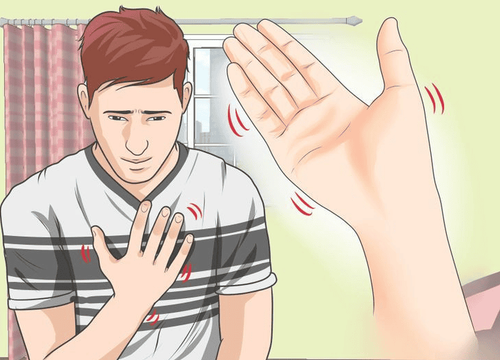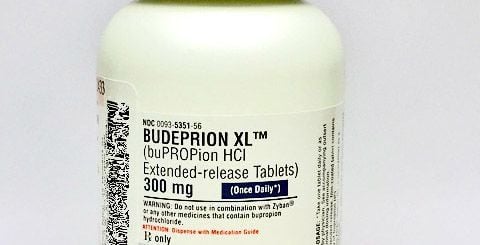This is an automatically translated article.
Zoloman belongs to the group of psychotropic drugs containing the main active ingredient is Sertraline. Zoloman is used in the treatment of pathologies related to mental disorders with manifestations such as depression and anxiety. The information related to the composition, uses, dosage and usage of Zoloman will help patients treat effectively, and at the same time can limit the unintended effects of the drug.1. What is Zoloman?
Zoloman medicine is prepared in the form of long film-coated tablets with 3 different strengths of 25mg, 50mg and 100mg with the main ingredients including:
Active ingredients: Sertraline (as Sertraline hydrochloride) content 25mg, 50mg, 100 mg. Excipients: Microcrystalline cellulose, Anhydrous Dicalcium phosphate, Magnesium stearate, Sodium starch glycolate, Opadry II white and Green lake in 25 mg tablets, Opadry II blue in 50 mg tablets, Yellow iron oxide in 100 mg tablets. Active ingredient Sertralin is a derivative of Naphthylamine, whose main mechanism is to inhibit Serotonin (5-hydroxytryptamine, 5-HT) reuptake selectively at nerve endings, thereby having antidepressant effects.
2. What does Zoloman do?
Zoloman has the main use in the treatment of the following cases:
Depressive neuropsychiatric disorders. People with panic disorder, with or without agoraphobia. People with obsessive-compulsive disorder (OCD). Severe stress at work, daily life or after an injury. Premenstrual anxiety disorder. Men suffer from premature ejaculation. Zoloman is contraindicated in the following cases:
Hypersensitivity to any of the ingredients in Zoloman. History of hypersensitivity to drugs containing Sertraline. People who are on treatment or have a history of using MAO inhibitors for ≤ 2 weeks.
3. How to use and dose Zoloman:
Zoloman is used in the morning or evening, with or without meals. For each patient's condition, the doctor will adjust the dose differently such as:
Depression: People ≥ 18 years old take 50 mg/time x 1 time/day. Single use does not exceed 200 mg. Within 1 week, the dose can be changed by 50-200 mg/day.
Obsessive-compulsive disorder:
People ≥ 18 years old take 50 mg/time x 1 time/day. Single use does not exceed 200 mg. Within 1 week, the dose can be changed by 50-200 mg/day. People 13 - 17 years old take 50 mg/time x 1 time/day. People 6 - 12 years old take 25 mg/time x 1 time/day. People < 5 years old Not recommended. Panic, anxiety or stress disorder: People ≥ 18 years old take 25 mg/time x 1 time/day. In 1 week the dose can be increased to 50 mg, once a day.
Anxiety disorder before menstruation: People ≥ 18 years old take 50 mg/time x 1 time/day. Use near the menstrual cycle or in the days after ovulation.
Premature ejaculation: People ≥ 18 years old take 25 - 50 mg/time x 1 time/day.
Recommendations:
Do not use the drug in people under 18 years of age with signs of depression, panic disorder, anxiety, stress, premenstrual anxiety disorder or premature ejaculation. Discontinue Sertraline inhibitor therapy 2 weeks prior to initiating MAO inhibitors and vice versa.
4. Side effects of Zoloman
Common
Neurological symptoms: Headache, somnolence, fatigue, dizziness, insomnia. Gastrointestinal symptoms: Taste disturbance, loss of appetite, nausea, dry mouth, diarrhea or constipation, dyspepsia, abdominal pain. Skin symptoms: Sweating, skin rash, flushing Signs in blood biochemical tests: Mild decrease in blood uric acid, increase in total cholesterol and blood triglycerides. Cardiovascular symptoms: Palpitations, chest pain. Other signs: Muscle pain, back pain, vision dysfunction, tinnitus. Uncommon
Gastrointestinal symptoms: Difficulty swallowing, esophagitis, gastroenteritis, tooth decay. Cardiovascular symptoms: Tachycardia, vasodilation, hypotension or hypertension, peripheral vasospasm. Musculoskeletal symptoms: Myositis, arthritis, muscle weakness. Other signs: Conjunctivitis, eye pain, ear pain, thirst, weight loss. Rare
Neurological symptoms: Convulsions, asthenia, fatigue, dyskinesia, drug addiction syndrome. Cardiovascular signs: Myocardial infarction. Gastrointestinal symptoms: stomatitis, glossitis, gastritis, gastrointestinal bleeding, rectal bleeding, diverticulitis, colitis. Skin signs: Contact dermatitis, hypersensitivity reactions Other symptoms: Dehydration, hypoglycemia, leukopenia, thrombocytopenia, abnormal bleeding. Hearing dysfunction and vision loss. When you see the above side effects, you should stop taking Zoloman immediately, and contact your treating doctor or pharmacist for advice and timely treatment.
5. Note the use of Zoloman in objects
Close supervision and low dose initiation is required in those with severe depressive symptoms, suicidal ideation or behavior in the early stages. Use caution when using the drug in the following cases: Elderly people, alcoholics, people with epilepsy, mania. Decreased liver and kidney function, hypothyroidism. People with blood clotting disorders, hyponatremia, anorexia, weight loss. There are currently no solid data on the safety of Zoloman in pregnancy and lactation. Therefore, drug use is not recommended in these subjects, unless treatment is required under the supervision of a psychiatrist or where the benefits outweigh the possible risks. . Be careful with people who drive vehicles or operate machinery because of unwanted side effects of the drug.
6. Interaction between Zoloman and other drugs
Do not combine Sertraline with Monoamine Oxidase (MAO) inhibitors. Do not take Zoloman with drugs containing Sumatriptan because it may increase the incidence of migraine headaches, fatigue, decreased reflexes and loss of body coordination. Caution should be exercised when Zoloman is used concomitantly with drugs metabolised by CYP2D6 because the active ingredient Sertraline in Zoloman is metabolized by the cytochrome P450 enzyme CYP2D6 and inhibits its activity. Drugs containing Phenothiazines such as Thioridazine or some class 1C antiarrhythmic drugs such as Propafenone or Flecainide, should not be used together with Zoloman, because it can increase unwanted effects and toxicity of both drug classes. Sertraline in Zoloman inhibits CYP3A4, so when combined with Carbamazine, it is necessary to monitor the concentration of Carbamazine in the blood. Because the active ingredient Sertralin in Zoloman has the ability to bind a lot of blood proteins, it should be used with caution when used with drugs that are also heavily bound to blood proteins such as anticoagulants, Digoxin, Digitoxin, ... because it can cause increased toxicity. Note when using Zoloman with drugs such as: Benzodiazepine, Lithium, Cimetidine, hypoglycemic drugs or alcohol because it can increase unwanted effects of the drug. Carefully read the instruction leaflet of Zoloman on the packaging before use and consult a neuropsychologist to get the best treatment results.
Please dial HOTLINE for more information or register for an appointment HERE. Download MyVinmec app to make appointments faster and to manage your bookings easily.













